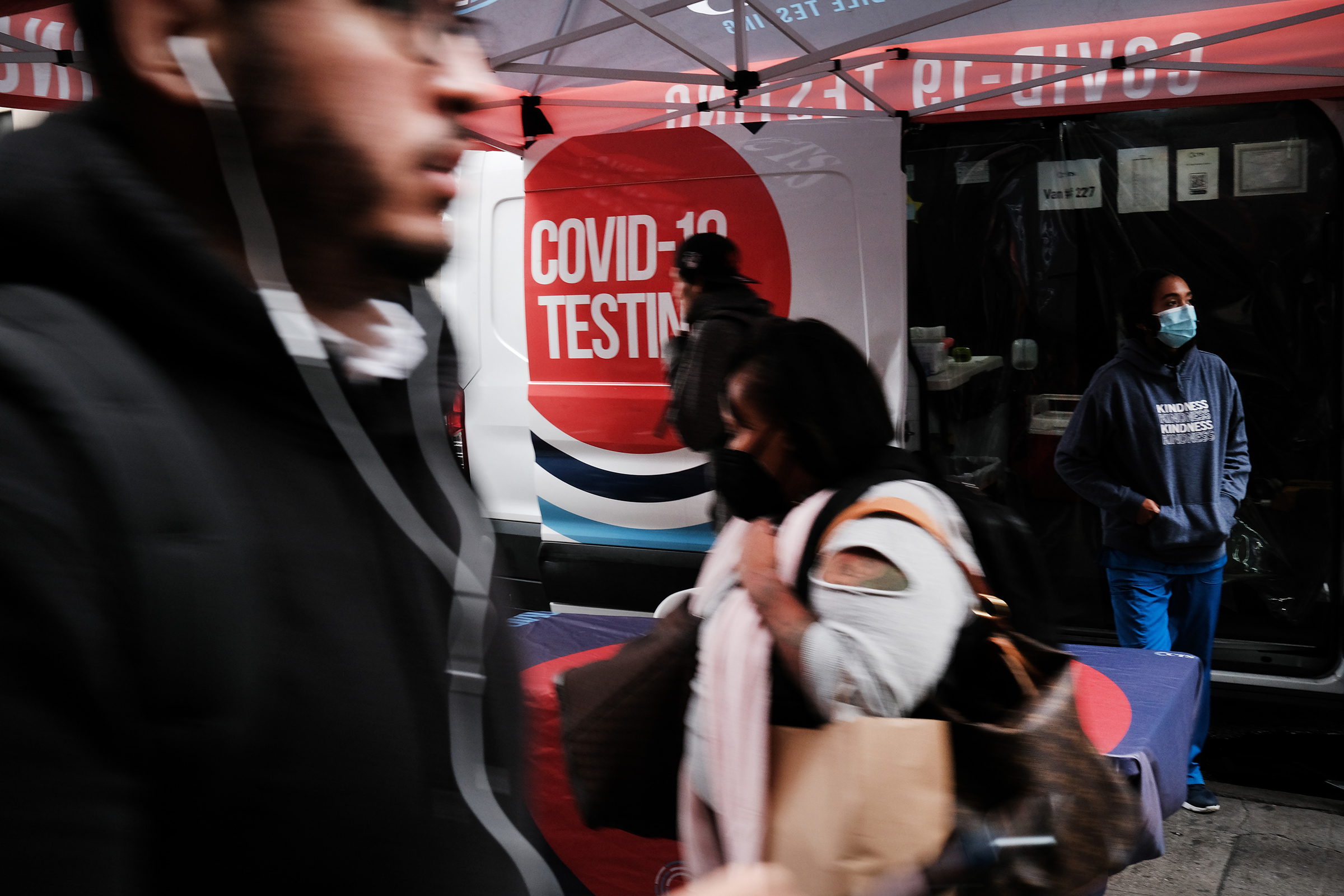
On Nov. 4, the Occupational Safety and Health Administration (OSHA) announced an emergency temporary standard (ETS) directing larger employers to take steps to keep their workplaces safe from COVID-19 by either requiring vaccinations or weekly testing and masks for those who are not vaccinated.
This effort has been blocked, at least temporarily, and is now being considered by the U.S. Court of Appeals for the Sixth Circuit. For the moment, OSHA has suspended implementation and enforcement of the requirements pending future developments in the litigation.
Most Americans know little about how OSHA works. Yet that hasn’t stopped critics—including politicians and judges who should know better—from accusing OSHA of imposing a “vaccine mandate,” labeling it an unconstitutional power grab and conjuring images of agents barging into worksites, making unachievable demands and driving companies out of business with huge fines if their workers aren’t vaccinated against COVID-19.
Read More: Yes, You Should Get a COVID-19 Booster
We know how OSHA works—we ran it. We can assure concerned employers there is no “OSHA vaccine mandate.” OSHA is charged with assuring that employers provide safe workplaces for their employees and that is exactly what it is doing.
The past 21 months have shown that the workplace plays a central role in driving the pandemic. Exposed on the job, workers infect other workers and bring the virus back to their homes and communities. Just as employers must make sure that asbestos is not present in a workplace, the ETS requires employers to protect their workers from exposure to another deadly hazard: potentially infectious workers.
Contrary to what its critics are labeling it, the OSHA standard does not require that anyone get vaccinated. Large and medium-size employers (it covers only those with 100 or more workers) have the option to require unvaccinated workers to wear a mask on the job and test negative for COVID-19 at least weekly. They can also require those workers to do their jobs exclusively from home. Or the employer—not OSHA—can insist their workers get vaccinated.
Read More: There’s Only One Way to Stop the Emergence of Variants Like Omicron
The rule will be primarily self-enforcing. Most employers are not resisting, they are adapting. They want to keep their workers safe, and they want a level playing field where everyone follows the same rules and no one is disadvantaged for protecting their employees.
Some enforcement will, of course, be necessary. Having run OSHA, a small agency with a budget of about one-sixteenth of the Environmental Protection Agency, we can predict how it will respond.
It will be workers, fearful of getting sick, who are likeliest to contact OSHA if they believe their workplaces are unsafe. Much of OSHA’s response will be done by phone; OSHA will ask employers to send in their documentation of worker vaccinations and testing. In limited cases, the agency will conduct spot checks, but OSHA does not practice “gotcha” inspections—with its tiny staff, it would take 160 years to inspect every workplace in the country just once.
Rumors have spread of OSHA handing out hundreds of thousands of dollars in fines when it finds a hapless employer who hasn’t complied with the requirements of the standards. That too is a myth. The average penalty for a serious violation is $5,473, petty cash for any sizable employer.
Before the rule was blocked, OSHA had given employers a month to learn which of their employees were still unvaccinated and begin requiring them to wear a mask. The testing requirement would go into effect a month after that. For the moment, these requirements have been suspended, but when the rule was first issued, some employers worried that the deadlines would be difficult to meet. In the past, OSHA has historically taken the position that if an employer shows they tried in good faith to comply, yet circumstances made it impossible, it won’t issue a citation.
Even without the ETS in place, if an employer isn’t sure who is vaccinated and wants to be on the safe side, it can do what many companies, especially in retail, do now: require all employees to wear masks. This sends the message to workers as well as customers that this business cares about their safety. After all, there have been thousands of COVID-19 outbreaks in retail establishments, so many people understandably want to avoid shopping in stores where they might be exposed. The appearance of the Omicron variant makes the OSHA standard even more important.
Read More: Here’s What COVID-19 Vaccine Makers Are Doing to Fight Omicron
We know from experience that most employers will comply with OSHA requirements without an OSHA inspection, just as most people obey the law without a police officer looking over their shoulder. And we know from the experience of some of the biggest companies in the country that when employers require vaccinations, workers overwhelmingly comply. Despite the fears that 25% or even 50% of workers would walk off the job, when employers like United Airlines actually started to require vaccinations, only a very small percentage of workers refused.
On the other hand, millions of workers have left the workforce and are reluctant to return, afraid of getting or spreading COVID-19 on the job. The OSHA ETS is an important step in making workplaces safe, stopping virus transmission and reviving the economy by making it safe to return to work.
More Must-Reads from TIME
- Cybersecurity Experts Are Sounding the Alarm on DOGE
- Meet the 2025 Women of the Year
- The Harsh Truth About Disability Inclusion
- Why Do More Young Adults Have Cancer?
- Colman Domingo Leads With Radical Love
- How to Get Better at Doing Things Alone
- Michelle Zauner Stares Down the Darkness
Contact us at letters@time.com